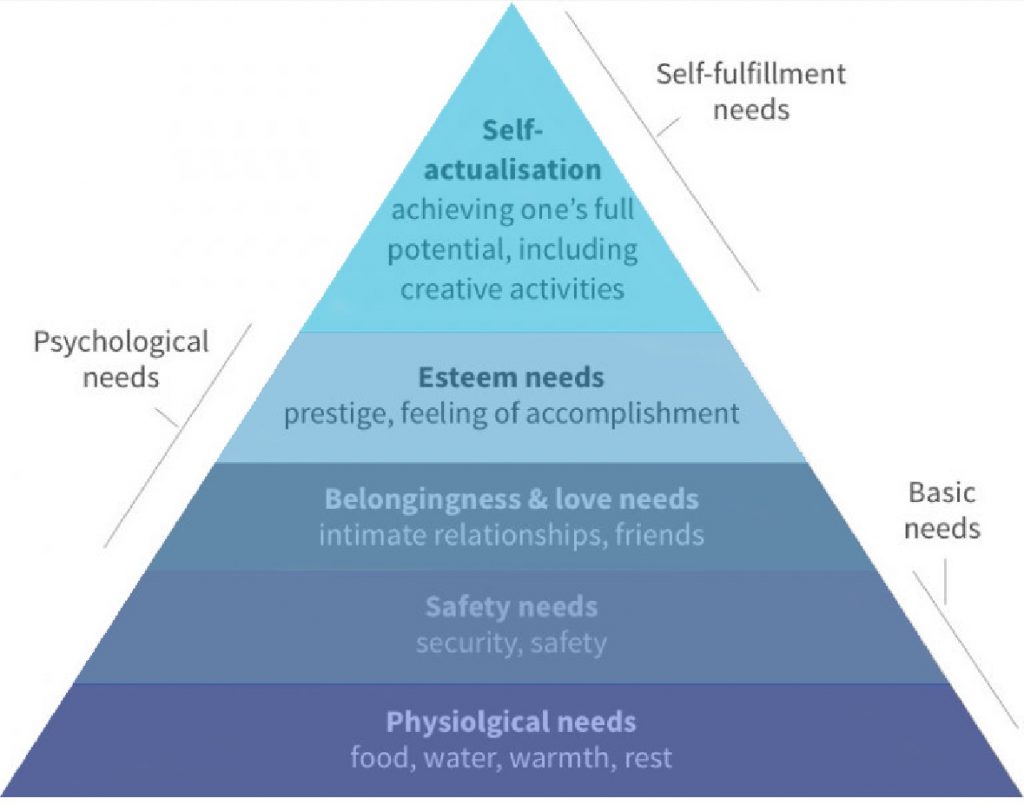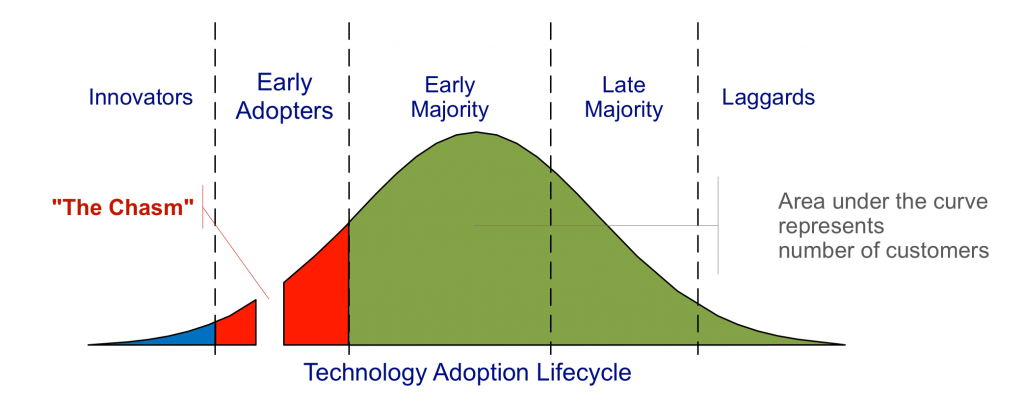Digital gone wrong: is Gorillas just an isolated case?

I was reading the news about Gorillas closing for good in Italy today and I was not surprised at all of the fact that also this company is in trouble and is laying off in many countries (right after Getir’s announcement ).

I was also quite sad at reading the news as I experienced a closing of a digital business while I was in it, and if you wonder, yes: it’s quite a shock to find yourself in this situation. Best of luck to all Gorillas people out there.
I am online since 1992, and today I design market strategies as a freelancer, and I have a mixed market analyst and marketing background. This means I constantly look for a WHY and I find explanations in numbers and market analysis.
Here is my explanation of what’s going on and what happens with digital businesses, and why you need to consider two elements when running a digital business: the pyramid of needs and the innovation curve. And you need to ask yourself “what need/issue does my product meet/solve?” to make sure your product is here to stay, and “what stage of adoption am I in?” to plan accordingly your finance.
First of all, we need to consider that digital businesses were born and grew thanks to brilliant minds who anticipated and understood the evolution of consumer habits, thanks to the availability of widespread technologies (smartphones and mobile networks in the first place), and thanks to the understanding of the evolution of the consumer himself (who, thanks to the abundance of any product dedicated to him – from food to entertainment to household appliances to personal services and so on – has broadened his sphere of needs and refined his claims in terms of product / service). These brilliant minds decided to move into digital after considering all these elements.

But then not all that glitters is gold. Not all digital businesses had company leaders and executives able to understand WHY their businesses were growing or WHY their businesses were not growing, to eventually adjust their strategy.
Many digital businesses born between 2000 and 2010 have struggled to take off, and in many cases this was due to the slow diffusion of digital-enabling technologies (smartphones and data networks) and social media.
Social media have been the only channel capable of reaching everyone, not just the audience you can typically reach by advertising on a magazine, a newspaper, on during a tv show. All these traditional media could only reach a portion of their audience, and quite often with a very limited time to explain complex products and services. With social media, companies had for the very first time a chance to talk to everyone, even to those they didn’t even think about to talk to, and the best thing was, they could also get an interactive conversation – if they are able to listen.
What I noticed is in those companies where executives came from technology, there have been rapid evolutions of businesses after 2010. At that time in just a few months, enabling technologies like the first iPhones and data networks with 3G and 4G allowed almost anyone to access social media and be subject to the spread of digital innovations. Many successful digital companies developed quickly right after 2010 thanks to enabling technologies, combined with branding, PR and the right communication, other than of course innovative products and services.
I have been an analyst in technology and this market has an incredible characteristic: it prepares products and services that are going to become “mainstream” in a very long term (typically 10 years or a lot more). To give you an idea, in 2003 I was a technology analyst for retail and I was writing reports about omnichannel, e-commerce and mobile payments.
Tech companies have the ability to anticipate trends in the long term. Because their strategy is based on numbers and market analysis and because they know it takes time for people to change their habits, and it takes even more time for masses to do so. And tech companies know very well not all consumers are the same – as Rogers’ bell curve of technology adoption explains.

I have noticed that digital businesses whose decision-makers come from non-tech markets did not grow as fast and as big as those digital businesses whose executives come from tech sectors.
Non-tech companies often set their strategy to grow fast with aggressive salespeople and advertising and do not seem to think about slower adopters, or market conditions, or motivations to buy a product or a service. Too many companies that don’t have a long-term strategy of growth tend to think the world is done of good and bad consumers. WRONG. Your best clients could be the laggards, as they took time to evaluate the market and competition, and then finally they decide to stay with you.
Digital businesses are by nature a mix of technology (think about SaaS, streaming, e-commerce, apps offering digital services and so on) and product /service (music, entertainment, delivery, leisure, apparel, grocery, design, beauty, health, etc.). This means they are often subject to the same time needed by the masses to move to their product and change habits – eventually explore various possibilities before choosing.
Also, not all habits can be changed and not all needs can be met. And changing needs and habits refer to the fact that digital products and services provide “better access” or “quicker access” to SOLVE PROBLEMS.
Some of these businesses were born in the wake of needs that arose with great urgency during a historical phase – the pandemic – in which many habits have changed. But habits have changed not because it became all of a sudden more convenient or easier or quicker to do things.
Habits changed because they had to.
This doesn’t mean consumers were happier with the new habits.
Was grocery delivery better than going out for shopping during the pandemic? YES.
Is grocery delivery better than going out for shopping after the pandemic? Not for everyone.
Were wellness apps better than going to the gym during the pandemic? YES.
Are wellness apps better than going to the gym after the pandemic? Not for everyone
Until companies will not consider BOTH the evolution of the market and that of their clients, we will keep reading about layoffs.
Want to improve your strategy and analize your market to make sure you are going to the right path? Contact me – I can help you with market strategy and brand communication.
In case you missed it, a website is also tracking tech layoffs following the pandemic.
